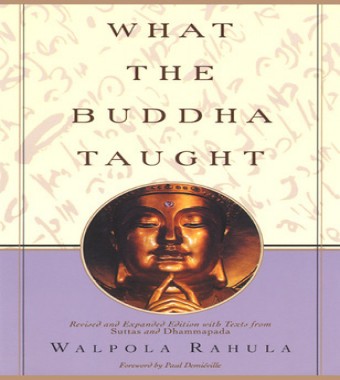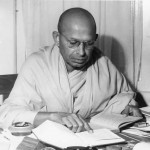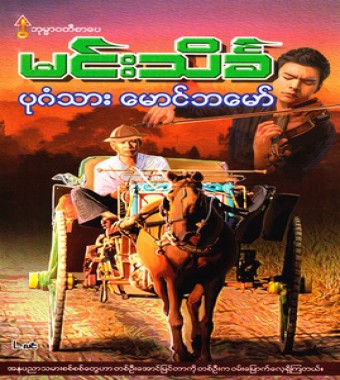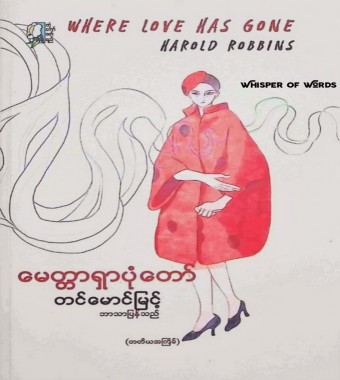BOOK DETAILS
“သိဒ္ဓတ္တခေါ် ဂေါတမဗုဒ္ဓ၏ လမ်းညွှန်မှုများ”
ဗုဒ္ဓဘာသာမှာ “ထေရဝါဒနဲ့ မဟာယန” ဆိုတဲ့ ဂိုဏ်းနှစ်ခု ရှိပါတယ်။ ထေရဝါဒကို ထိုင်း၊မြန်မာ၊လာအို စတဲ့ အရှေ့တောင်အာရှနိုင်ငံအများစုမှာ ကျင့်သုံးကြပီးတော့ မဟာယနကိုတော့ တရုတ်၊တိဘက်၊မွန်ဂို ဘက်ကနိုင်ငံတွေမှာ တွေ့ရများပါတယ်။
ထေရဝါဒ နဲ့ မဟာယန ရဲ့ အဓိကကွဲပြားချက်က ရည်မှန်းရာပန်းတိုင်ကွဲပြားသွားခြင်းပါပဲ။ထေရဝါဒဟာ သံသရာမှလွတ်မြောက်ရေး နိဗ္ဗာန်ကို ဦးတည်ပီးတော့ မဟာယနကတော့ သံသရာထဲမှာ ကောင်းကောင်းကျင်လည်တတ်ဖို့ကို ဦးတည်ပါတယ်။
ပါချုပ်ဆရာတော်ဘုရား မိန့်ကြားခဲ့ဖူးပါတယ်။ “တကယ်တော့ ဗုဒ္ဓဟာ ဘာသာတရားမဟုတ်ဘူး။လမ်းညွှန်မှုတွေပဲဖြစ်တယ်။ကျေးဇူးရှိနေလို့ ကိုးကွယ်ရတာ” ဆိုတဲ့စကားအတိုင်း ဗုဒ္ဓဘာသာရဲ့ ကျမ်းစာတွေကိုကြည့်ရင် လမ်းညွှန်မှုတွေပဲ ဖြစ်ပါတယ်။သို့ပေသိ နှစ်ပေါင်း (၂၅၀၀) ကျော်လာတဲ့ ဘာသာတရားတစ်ခုမှာ ဗုဒ္ဓအမှန်တကယ် မိန့်ကြားခဲ့တာတွေသာ မဟုတ်ဘဲ တရားဖြန့်ဝေသူတွေရဲ့ အာဘော်တွေကြောင့် အဓိပ္ပါယ်ကွဲလွဲသွားတာတွေ၊ မဟောကြားခဲ့တာတွေကို ဗုဒ္ဓအမည်ခံပီး ထပ်ပေါင်းဖြည့်စွက်လာတွေပါ တွေ့လာရပါတယ်။ အထူးသဖြင့် မြန်မာနိုင်ငံလို နိုင်ငံမျိုးမှာ ဒီပြသနာက ပိုဆိုးပါတယ်။ ဒါရဲ့ နောက်ဆက်တွဲဆိုးကျိုးအနေနဲ့ လူတော်တော်များများက ဗုဒ္ဓနဲ့ဝေးကွာလာကြပါတယ်။ဗုဒ္ဓသည် အစစ်မှန်သဘာဝတရားတွေကိုသာ ဟောကြားခဲ့တာဖြစ်တဲ့အတွက် ဗုဒ္ဓနဲ့ဝေးကွာလာခြင်းက သဘာဝတရားသဘောတွေနဲ့ ဝေးကွာလာခြင်းပါပဲ။ အဲ့ဒီအခါ လူတွေဟာ ပူလောင်လာကြတယ်။အမှန်ကိုအမှန်တိုင်း မြင်နိုင်စွမ်း လက်ခံနိုင်စွမ်း တွေနည်းပါးလာကြပါတယ်။
ဒီကလူတွေက ဗုဒ္ဓနဲ့ဝေးကွာလာကြပေမယ့် အနောက်နိုင်ငံတွေကတော့ တဖြည်းဖြည်းနဲ့ ဗုဒ္ဓဆီကို ချည်းကပ်သွားနေကြပါတယ်။ဥပမာ- Stress and anxiety ကို ထိန်းချုပ်ဖို့ နည်းလမ်းဖြစ်တဲ့ Mindfulness လို သတိပဌာန်အားထုတ်ရေးတွေမှာ ဗုဒ္ဓရဲ့အဆုံးမတွေကို Reference ယူလာကြပါတယ်။ သူတို့မှာ မြန်မာနိုင်ငံလို ရိုးရာ ပိတ်ပင်တားဆီးမှုတွေ၊အယူအဆတွေမရှိတာကြောင့် ဗုဒ္ဓဆီကို လက်တွေ့ကျကျချဥ်းကပ်နိုင်ကြပါတယ်။
အထူးသဖြင့် Walpola Rahula ရဲ့ “What the buddha taught” ဆိုတဲ့ စာအုပ်မှာ ဗုဒ္ဓကို ဘာသာတရားအနေနဲ့မဟုတ်ဘဲ ဆရာတစ်ယောက်လို၊ ဗုဒ္ဓရဲ့လမ်းညွှန်မှုတွေဟာ အသက် ၅၀ ကျော်မ ဘုန်းကြီးကျောင်းမှာ သွားနာရတဲ့ တရားတွေမဟုတ်ဘဲ လူတန်းစားမရွေး၊အသက်ရွယ်မရွေး လိုက်နာကျင့်သုံးရမယ့် လမ်းညွှန်မှုတွေအဖြစ်နဲ့ ဖော်ပြထားပါတယ်။ ဗုဒ္ဓက စိတ်နဲ့ပတ်သပ်ပီး ဘယ်လိုဟောကြားခဲ့သလဲ၊ သစ္စာလေးပါးရဲ့ အစစ်မှန်အဓိပ္ပါယ်က ဘာများလဲ။ ဒီစာအုပ်ကို ဖတ်ပီးတဲ့အခါ အနည်းငယ်လောက်တော့ ဗုဒ္ဓနဲ့ပိုရင်းနှီးသွားစေပါလိမ့်မယ်။
From Wikipedia, the free encyclopedia What the Buddha Taught, by Theravadin Walpola Rahula, is a widely used introductory book on Buddhism. Using quotes from the sutras, Rahula gives his personal interpretation of what he regards to be Buddhism's essential teachings, including the Four Noble Truths, the Buddhist mind, the Noble Eightfold Path, meditation and mental development, and the world today.






1 Review
Haruki
9 months agoဒီSiteကိုထောင်ပေးထားတဲ့အစ်ကိုတွေ ဘယ်သူဘယ်ဝါမှန်းမသိပေမယ့် အရမ်းကျေးဇူးတင်ရှိပါတယ်ခဗျာ၊ ရတနာတွင်းကိုတွေ့လိုက်ရသလို ခံစားချက်မျိုးပါ၊ ဖတ်ချင်တာတွေရှာတွေ့လိုက်လို့လည်း ဝမ်းသာပီတိဖြစ်ရပါတယ် ဆက်သွယ်ကျေးဇူးတင်ဖို့ရာ ဘယ်ကနေဆက်သွယ်ရမလဲမသိလို့ စာအုပ်reviewမှာပဲ ရေးထားခဲ့ပါတယ်၊ what the Buddha thoughtကိုလည်း သေချာလေးဖတ်ရှုပါ့မယ်